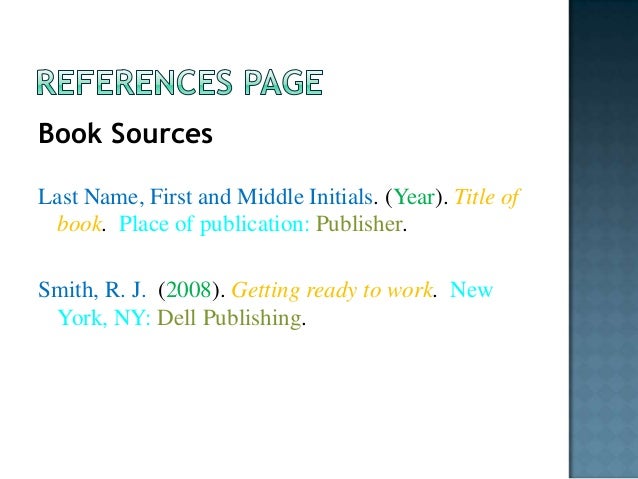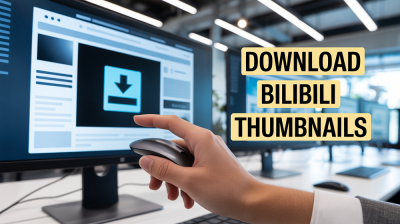When it comes to research, citing your sources correctly is crucial. LinkedIn, often overlooked as a valuable source, can provide essential insights from professionals and industry leaders. However, knowing how to cite LinkedIn profiles or posts in APA format can be tricky. In this post, we’ll break down the essentials of citing
Understanding APA Format Basics

The American Psychological Association (APA) style is commonly used in social sciences, and it has specific rules for citing various sources. Here are the key elements you need to know:
- Author: Last name, Initials. For LinkedIn, this is typically the person's name as it appears on their profile.
- Date: Year, Month Day. For posts, include the exact date; for profiles, you can just note the year.
- Title: This is the title of the post or a description of the profile. Use italics for titles of standalone works.
- Source: The website name (LinkedIn) followed by the URL.
Here’s a simple structure for citing a LinkedIn profile:
Format: Author, A. A. (Year). Title of profile. LinkedIn. URL
For instance:
Example: Smith, J. (2023). Marketing Specialist. LinkedIn. https://www.linkedin.com/in/johnsmith
And for a LinkedIn post:
Format: Author, A. A. (Year, Month Day). Title of post. LinkedIn. URL
Example: Doe, J. (2023, March 10). The importance of networking in today’s job market. LinkedIn. https://www.linkedin.com/pulse/importance-networking-job-market-johndoe
Remember, consistency is key! Make sure to follow these guidelines for all your LinkedIn citations to maintain clarity and professionalism in your work.
Also Read This: What to Do If You Can't Log In to LinkedIn: Troubleshooting Tips
3. Reasons to Cite LinkedIn Sources
Citing LinkedIn sources in your research can seem a bit unconventional at first, but there are several compelling reasons to do so. Here are a few:
- Credibility: LinkedIn profiles often contain valuable professional information, including job titles, work experience, and educational backgrounds. Citing these sources lends credibility to your research by providing real-world context and supporting evidence.
- Networking Insights: Many professionals share their insights, experiences, and industry knowledge on LinkedIn. By citing these profiles, you can incorporate firsthand accounts and expert opinions into your work, enhancing the depth of your research.
- Current Information: LinkedIn is a dynamic platform where users frequently update their profiles. This means you can find up-to-date information directly from the source, which is particularly useful in fast-evolving fields like technology and business.
- Understanding Trends: Citing individuals who are thought leaders in your research area can help highlight current trends and opinions. Their expertise can provide a unique perspective that enriches your analysis.
- Encouraging Professionalism: By acknowledging the work of professionals in your citations, you foster a culture of respect and recognition in academic and professional circles. It emphasizes the importance of valuing contributions from all areas of expertise.
In summary, citing LinkedIn sources not only boosts the credibility of your research but also enriches it with current, firsthand perspectives from industry professionals. This can lead to a more nuanced understanding of your topic and a more robust argument.
Also Read This: Can I Change My LinkedIn Email Address? Steps to Update It
4. How to Cite a LinkedIn Profile in APA Style
Citing a LinkedIn profile in APA style requires attention to detail to ensure you provide the right information. Here’s a simple guide to help you format your citation correctly:
The general format for citing a LinkedIn profile in APA style is:
Author, A. A. (Year). "Title of the profile" [LinkedIn profile]. LinkedIn. URL
Here’s how you can break it down:
- Author: This is the name of the person whose profile you’re citing. Start with their last name followed by their initials. For example: Smith, J. D.
- Year: Include the year you accessed the profile. If the profile lists a last updated date, use that year. Otherwise, use the year you retrieved the information.
- Title of the profile: Use the job title or designation as the title of the profile. This is often found right under their name on their LinkedIn profile.
- LinkedIn profile: Indicate that it’s a LinkedIn profile by placing it in brackets after the title.
- URL: Finally, include the direct link to the individual’s LinkedIn profile. Make sure it’s not broken, as this can affect the reliability of your citation.
Here’s an example citation:
Doe, J. (2023). "Senior Data Analyst" [LinkedIn profile]. LinkedIn. https://www.linkedin.com/in/johndoe
Remember, it’s essential to verify the accuracy of the details you’re citing, especially the URL. This ensures your readers can easily locate the profile for their reference. Following these guidelines will help you seamlessly incorporate LinkedIn sources into your research while adhering to APA format!
Also Read This: How to Add Experience on LinkedIn? Adding New Job Roles and Career Milestones to LinkedIn
5. Citing LinkedIn Articles and Posts
Citing LinkedIn articles and posts is a fantastic way to incorporate contemporary insights from industry leaders into your research. These sources often provide unique perspectives that aren't found in traditional academic publications. However, you need to follow the APA format meticulously to ensure your citations are both accurate and professional.
Here’s how you can cite LinkedIn articles and posts:
Format for Articles:
- Author, A. A. (Year, Month Day). Title of the article. LinkedIn. URL
Example:
Smith, J. (2023, January 15). The Future of Remote Work: What You Need to Know. LinkedIn. https://www.linkedin.com/pulse/future-remote-work-what-you-need-know-john-smith
When citing a LinkedIn post, the format is slightly different:
Format for Posts:
- Author, A. A. (Year, Month Day). Content of the post. LinkedIn. URL
Example:
Doe, J. (2023, February 10). Excited to share my insights on the importance of emotional intelligence in leadership! LinkedIn. https://www.linkedin.com/posts/jane-doe/emotional-intelligence-leadership
Remember to include the full URL for the article or post, as it allows readers to easily access the source. Also, if you’re using a specific quote from the post, be sure to mention the author’s name in your text, along with the publication date, to maintain clarity and credibility.
Also Read This: How to Share an Article on LinkedIn to Showcase Your Expertise
6. Common Mistakes to Avoid When Citing LinkedIn
Citing sources correctly is crucial in academic writing, and LinkedIn citations are no exception. Here are some common pitfalls to avoid when citing LinkedIn articles and posts:
- Missing URLs: Always include the direct URL to the article or post. Omitting it can lead to accessibility issues for your readers.
- Incorrect Author Format: Ensure the author's name is formatted correctly—First Initial, Last Name. For example, use "J. Doe," not "Doe, J."
- Neglecting Publication Dates: Including the publication date is key to establishing the relevance and timeliness of the information. Always provide the full date (Year, Month Day).
- Omitting the Source Name: Don’t forget to mention that the content is from LinkedIn. This clarifies to the reader where the information is coming from.
- Using Inconsistent Formatting: Stick to one consistent format for all your citations throughout your paper. This includes font style, size, and indentation.
By avoiding these mistakes, you enhance the credibility of your research and make it easier for readers to follow your sources. Always double-check your citations against the APA guidelines to ensure that everything is in order.
Incorporating LinkedIn sources can add depth to your research, but it's essential to do it right. With a little practice and attention to detail, citing LinkedIn can be a straightforward process!
Also Read This: How to Find Pending Connections on LinkedIn and Manage Your Invitations
7. Tips for Finding Reliable LinkedIn Sources
When it comes to leveraging LinkedIn as a source for your research, the key is to ensure that the information you gather is not only relevant but also credible. Here are some practical tips to help you find reliable LinkedIn sources:
- Check the Profile’s Completeness: A complete LinkedIn profile typically includes a professional photo, a detailed summary, listed skills, endorsements, and recommendations. Profiles lacking these features may not be reliable.
- Review Activity and Engagement: Look at how active the individual is on LinkedIn. Are they sharing articles, publishing posts, or engaging in discussions? A well-connected professional likely has valuable insights.
- Assess the Network: Consider the person's connections. Are they connected with reputable professionals or organizations? A strong network can be an indicator of credibility.
- Look for Recommendations: Endorsements and recommendations from others add a layer of trust. If multiple people vouch for their expertise, it’s a positive sign!
- Examine Their Content: If the individual publishes articles or shares content, evaluate the quality and relevance of that material. High-quality contributions can indicate a knowledgeable source.
- Verify Their Credentials: Check their educational background and work experience. Ensuring that they have the qualifications related to your research topic is crucial.
- Use Advanced Search: Utilize LinkedIn’s advanced search features to filter results by industry, location, and other criteria. This can help you hone in on experts who align with your research needs.
By following these tips, you can enhance your ability to find reliable and credible sources on LinkedIn, ensuring that your research is not only informative but also grounded in trustworthy information.
8. Conclusion: The Importance of Proper Citation
In the world of research, proper citation is not just a formality; it’s a vital part of academic integrity. Citing your sources, especially when they originate from platforms like LinkedIn, is crucial for several reasons:
- Avoiding Plagiarism: Proper citation helps you give credit to original authors, thus protecting you from the pitfalls of plagiarism. It’s important to acknowledge the contributions of others to maintain your credibility.
- Enhancing Credibility: When you cite reliable sources, it lends authority to your work. Readers are more likely to trust your findings if they see that you've grounded them in credible, well-researched sources.
- Facilitating Further Research: Proper citations provide a pathway for your readers to explore the sources themselves. This makes your work a valuable resource in its own right, allowing others to delve deeper into the topic.
- Complying with Academic Standards: Many institutions have strict guidelines about citing sources, especially in academic work. Following these guidelines not only enhances your work but also helps you meet institutional requirements.
- Building Your Reputation: Consistently citing your sources properly can help build your reputation as a researcher. Being known for your thoroughness and adherence to citation standards can open doors in your academic and professional career.
In conclusion, citing LinkedIn sources in APA format is not just about following a style guide; it’s about fostering a culture of respect for intellectual property and contributing to the ongoing dialogue in your field. So, the next time you gather information from LinkedIn, remember the value of proper citation in enhancing your research’s credibility and integrity!
 admin
admin








